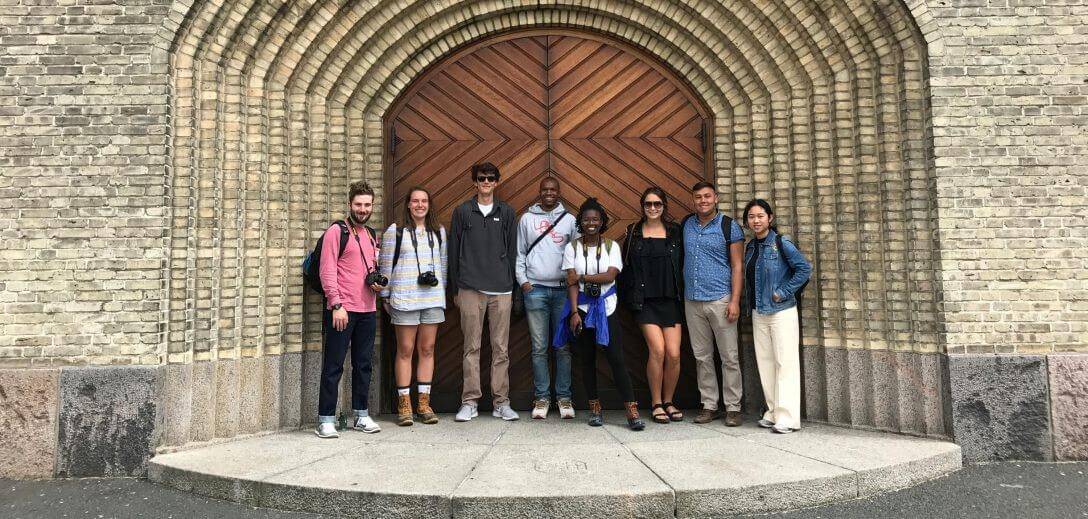Design in Denmark

This summer, seven Environmental Design and Architecture students traveled to Copenhagen, Denmark, under the supervision of Program Chair Magdalena Garmaz. Copenhagen is considered one of the most thoughtfully-designed cities in the world, and Magdalena put this trip together for students to be able to directly experience design and its effects on an urban environment, both the positive and the negative. “One of the most important reasons for our students to study abroad in Copenhagen is exposure to the cutting-edge, sustainable practices in all forms and scales of the built environment,” Professor Garmaz tells us. “Almost all the design decisions that shape this city are human-centric and systemic in nature, thus creating an exceptional quality of urban life.”
The traveling group explored the city over the course of a month, and visited various landmarks such as the Round Tower and the Black Diamond, an extension of the original Danish library, so-named because of the building’s exterior, seamlessly secured black granite panels. They also visited the memorial church of N.F.S. Grundtvig, a famous Danish architect who designed the exteriors of the surrounding homes to match the yellow brick, gothic style church.
It was not just large structures that caught the eyes of the group, however. “In Copenhagen, the focus is on you, and your well-being as a city dweller,” Professor Garmaz explains. “There is a law in place that stipulates that no one in Copenhagen can live more than 15 minutes by foot from a park, thus illustrating the care for well-being for all the city’s inhabitants.” The city has been designed around this mindset, with several parks spanning the area and bike racks on every block. “Whether they are biking, walking, using public transportation, or taking advantage of one of the many recreational areas, our students can see the impact of thoughtful design and planning decisions at every scale of Professor Garmaz context.”
Dr. Courtney Coyne-Jensen, a professor in Malmӧ, Sweden, and long-time friend of Professor Garmaz, joined the group for a few days of their adventures. Dr. Jensen shared her knowledge on the design-related history of Copenhagen and explained that the masterpiece they see today has been a work in progress. “The best part of spending time with Dr. Jensen was hearing how far Copenhagen has come and how long it has taken the city to get to where it is today,” says Sarah Curry, an Architecture student and member of the study abroad group.
The students couldn’t help but compare the design choices to what they had seen back home and commented on how the grass is always greener on the other side. They were given initiative and encouragement, however, when Dr. Jensen explained the lengthy process the city went through. Sarah, for one, greatly appreciated the chance to see both the good and the bad in a city so different from what she sees at home. “Is that not the point of traveling and experiencing and studying other places is anyway? To learn what works and what doesn’t work. Not through someone else’s lectures or slideshows but through your own discerning eyes and ears.”
Sarah and the other students left the streets of Copenhagen with inspiration for their own ideas on how to change the built environment. “Hopefully, we’ll take our observations and fashion them into design solutions that either work or don’t work, but at the very least get us closer to the objective truth and the greener grass.” You can learn more about the students’ adventures and see some of the amazing sights by visiting Sarah Curry’s blog.
See more in:
Student Experience,
Study Abroad
Related people:
Magdalena Garmaz